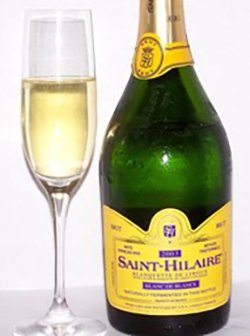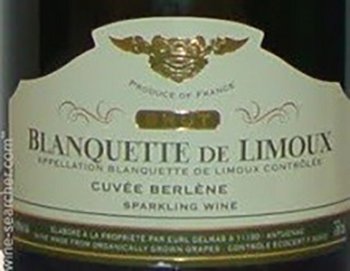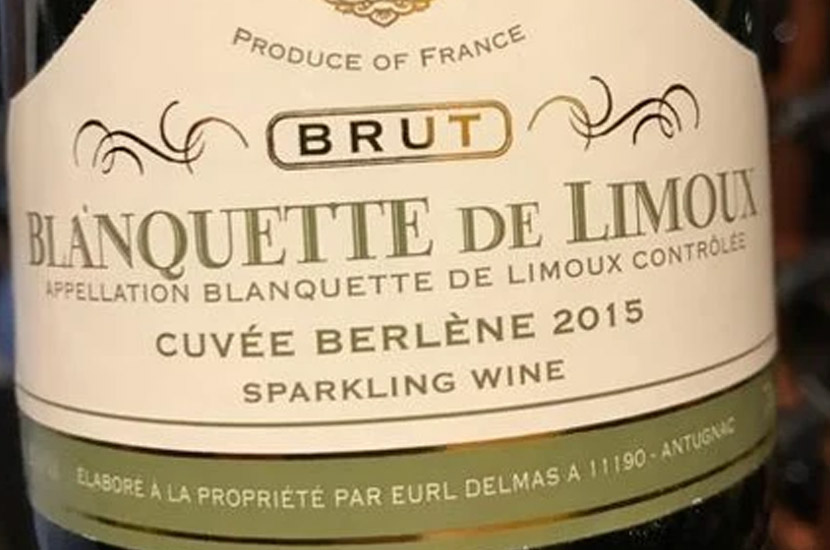Champagne is often credited as the “first sparkling wine produced.” Although it may be the most well-known, it was not the first sparkling wine created. That title belongs to Blanquette de Limoux created in 1531, over 100 years prior to Champagne. Blanquette de Limoux was first made in Saint Hilaire located near the Languedoc town of Limoux.
Blanquettes de Limoux are made using the “rural” or “ancestral” method. In the Méthode Champenoise, the process for making Champagne, the wine undergoes two fermentations. In comparisons, in the ancestral method the wine undergoes one single fermentation with winter pause.


A Lucky Accident:
It is very possible that bubbles in wine was a lucky accident. You may be wondering how you could be so lucky and create your own home brewed sparkling wine. I do not recommend trying this at home, but if you were going to, here is what you need to know.
Fermentation is not a complicated process. If you crush grapes, placed them in a glass and left them in a warm environment, the wild yeasts on the skins of the grapes or naturally found in the environment, would initiate fermentation. So, that grape juice would turn into alcohol. NOTE, I am not suggesting that you drink this.
Yeast metabolizes the sugars present in the grape juice and converts those sugars into carbon dioxide gas and ethanol (alcohol). Simply put Yeasts + Sugar = Alcohol
“Rural” or “Ancestral” Method
So back to the happy accident. It is important to understand heat will kill yeasts, but cold temperatures will not; cold temperature suspends yeast activity. In the 1500s when sparkling wine was created, wines were kept in a sealed barrel. If a barrel of fermenting wine were let out and there was a cold snap, the yeast would go dormant and the fermentation would pause. When the temperatures warm up, the yeasts are awakened, and fermentation starts back up. This is how we believe the first sparkling wine was made, and this is still how Blanquette de Limoux are made.
How to enjoy:
Blanquette de Limoux must be made from 90% Mauzac, with the remainder being Chardonnay and Chenin Blanc. Mauzac contributes a fruity sweet apple flavor to the wine. The wines must be aged for a minimum of nine months on the lees. The wines are dry, fruity, with light toast notes, fresh with great acidity. They are great as aperitifs. I enjoy them with fresh fruits, salads, and fresh salsas. Try a mango, tomato, and jalapeño pepper. Also enjoy with egg dishes, salty chips, and sea food. These wines can also pair well with general Tso chicken, roasted chicken, and pork dishes.
AOCs Style and Taste:
Note: This blog post focused on Blanquette de Limoux, but note that there are four AOC Blanquette de Limoux, Crémant de Limoux, Limoux and Blanquette de Limoux Méthode Ancestrale.
Crémant de Limoux – Crémant in France are sparkling wines made outside of Champagne but using the traditional method. Crémant de Limoux must only use 10% Mauzac or pinot noir grape. The other 90% are Chardonnay and Chenin Blanc.
Blanquette de Limoux Méthode Ancestrale wine must use 100% Mauzac and is made in the traditional method.
A Note about Limoux “25 km to the south of Carcassonne, nestled in the upper valley of the Aude between the Chalabrais plateau to the west and the Lecamp plateau to the east and sheltered by the Pyrenees, this appellation area is quite homogenous and encompasses 41 communities.” Languedoc and Sud de France site.


Leave A Comment
You must be logged in to post a comment.